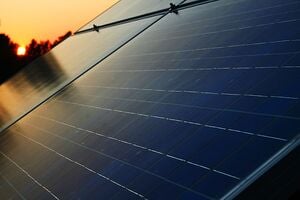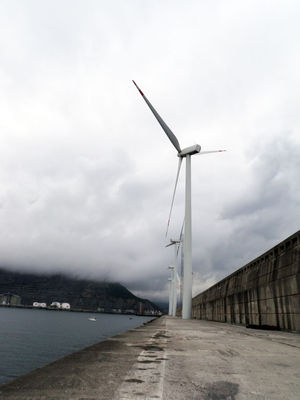Renewable energy

Renewable energy comes from resources which are continually renewed by natural processes, such as sunlight, wind, rain, tides, and geothermal heat.
Over the past few decades human have begun to harness the renewable energy resources in various ways in the hopes to decrease our dependence on fossil fuel based energy. The most common forms of renewable energy found implemented in our society include the following...
- Wind Energy
- Solar Energy
- Hydroelectric Energy
- Geothermal Energy
- Biofuels
Renewable energy is potentially environmentally friendly, but not always. The "old" renewables, biomass and hydroelectricity, generally have massive negative impacts:
- Burning biomass creates smoke, and indoor pollution which is a major cause of infant mortality in less developed communities.
- Dams, used for large-scale hydroelectric projects, cause massive environmental disruption, interfering with fish migration and breeding, preventing the natural flow of sediment and nutrients, and interrupting the natural water cycle with sometimes unpredictable consequences (such as the outbreak of the parasitic illness schistosomiasisW following the year-round irrigation introduced by the Aswan Dam.
While these renewable energy sources do have a smaller net impact on our environment regarding their greenhouse gas emissions compared to fossil fuels, it is important to note these significant environmental impacts when considering them as long term options for energy production.
In 2006, about 18% of global final energy consumption came from renewables, but this is almost all from the old, damaging renewables: 13% from traditional biomass, mainly for heating, and 3% from hydroelectricity. "New" renewables (small hydro, modern biomass, wind, solar, geothermal, and biofuels) accounted for only 2.4%, but are growing very rapidly.[verification needed]
As of 2020, renewable energy made up 29% of all global energy production. This was nearly 3% higher than the ratio found for 2019 of roughly 27%. The ratio of renewable energy in the global energy scheme was expected to increase further by 2021 and did so, with specific growth being seen in the wind and solar energy markets. As of 2021 wind and solar generated more than 10% of electricity globally. This is 9.3% ahead of the ratio in 2020 and is roughly double that of 2015. As of 2021 50 countries have crossed the 10% mark, with 7 new countries (Japan, Vietnam, Mongolia, China, Hungary, Argentina and El Salvador) being added in 2021. During this year solar energy production also grew 23% while wind energy production grew 14%. Global investment in low carbon energy in 2021 also grew to a record $755 billion, 27% higher than the year before.
If you are still not sure what the renewable energy is and how you can come up with something that uses this energy, then this page will really help you understand what you can achieve with some research and determination to do something interesting and useful for others. https://solargardenlightshq.com/15-amazing-diy-solar-projects/ on this page you can find 15+ very interesting project where the inventors have used renewable energy to product something useful. I really like the solar mobile charger project.
External links[edit | edit source]

- Wikipedia:Renewable energy
- Electropaedia - Energy Production Processes for Conventional and Sustainable Electrical Energy Supplies
- Rainwater Harvesting The Government funded sustainable living resource.
- The World's Biggest Renewable Energy Projects
- Office of Energy Efficiency and Renewable Energy - Renewable Energy
- World Economic Forum - Wind and solar generated 10% of global electricity in 2021 - a world first
- IEA - Global Energy Review 2021: Renewables